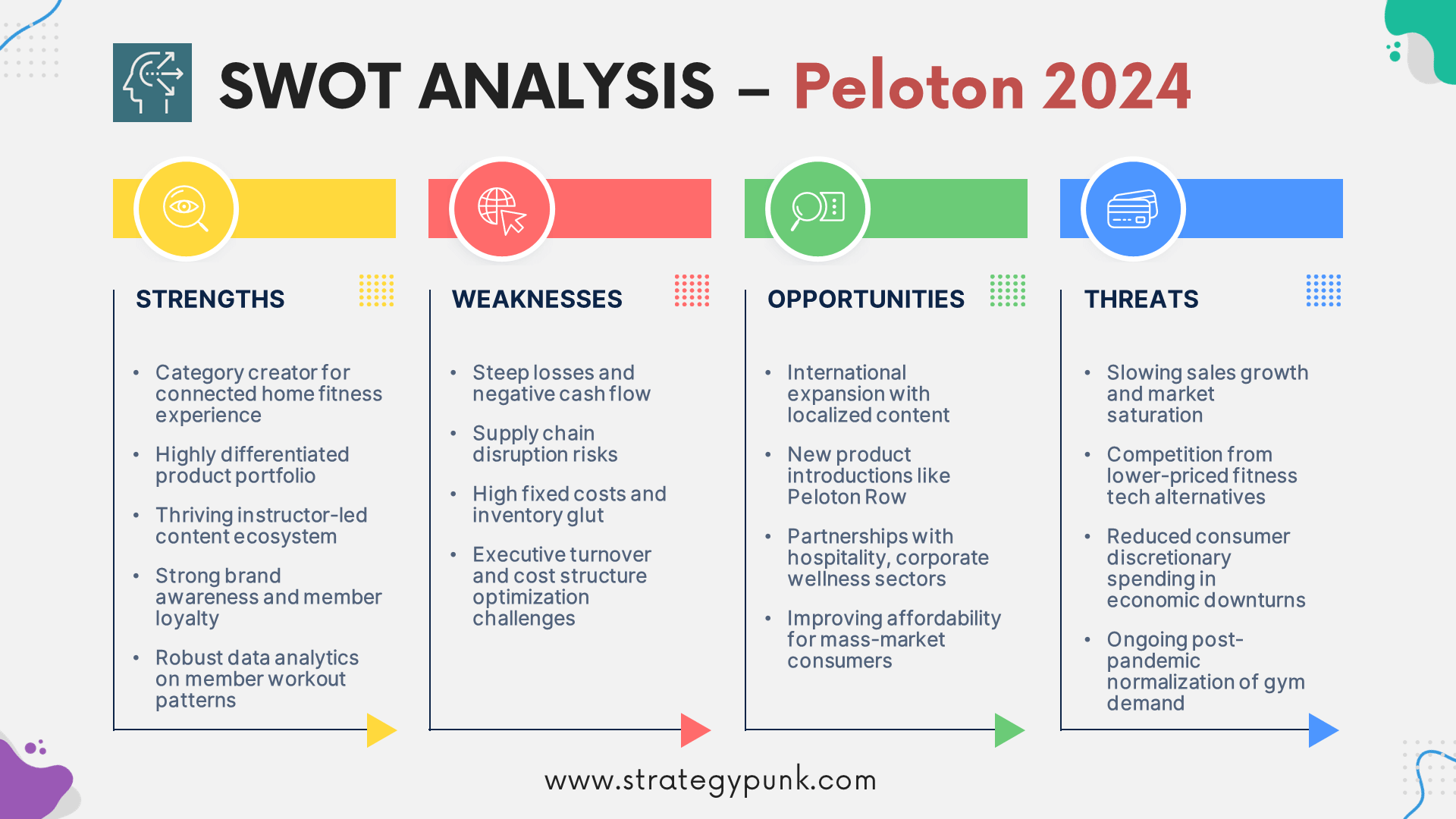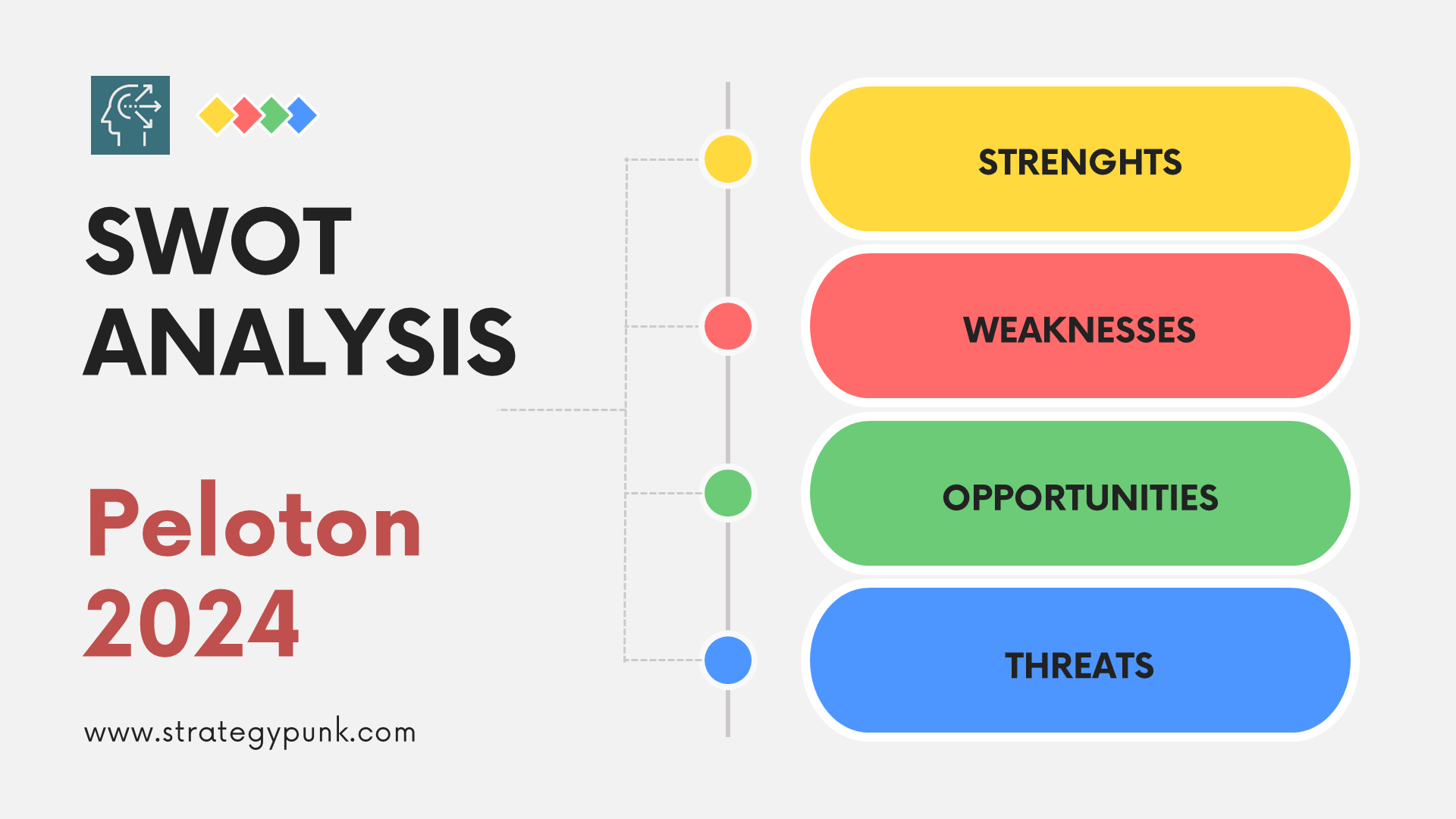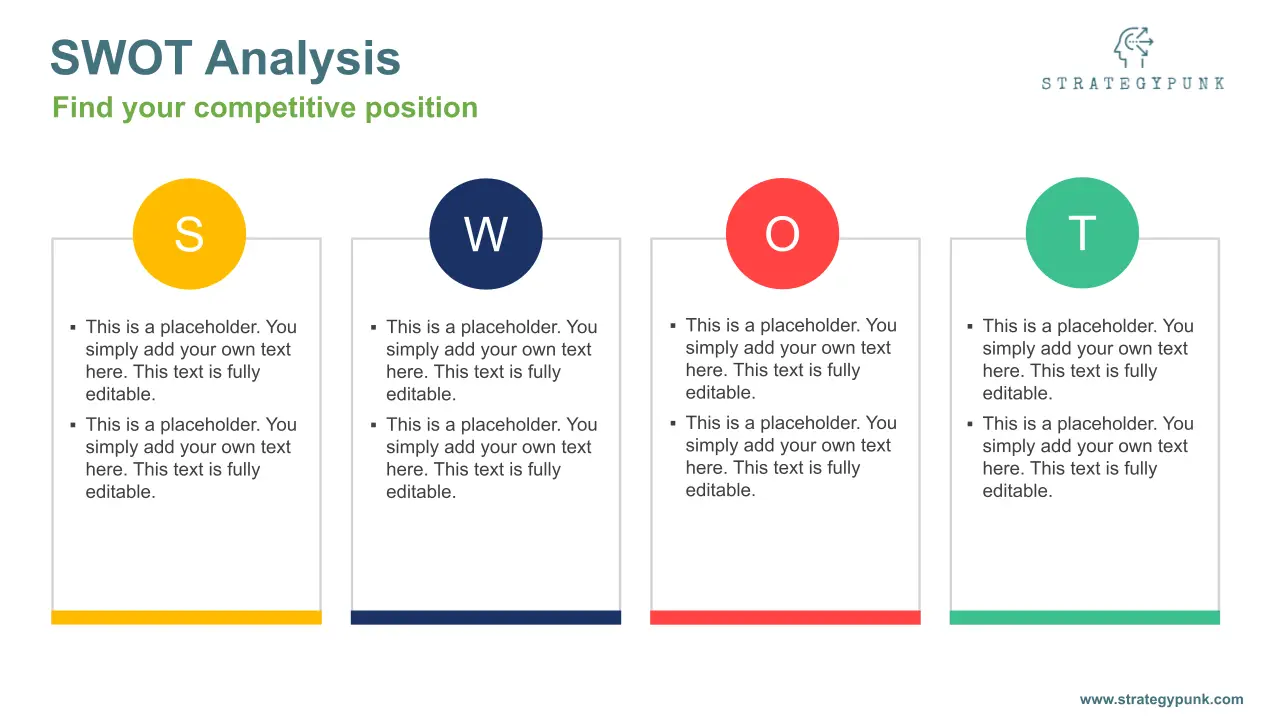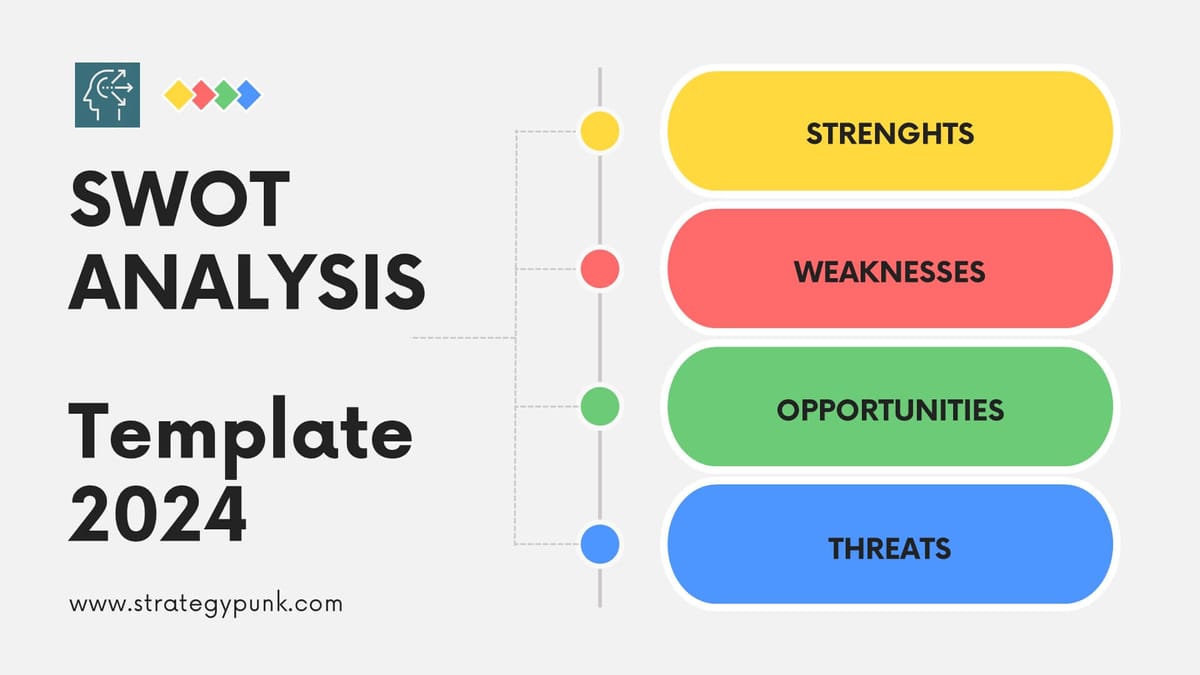Peloton SWOT Analysis: Free PPT Template and In-Depth Insights 2024
2024 Peloton SWOT Analysis: Free PPT Template & Detailed Guide. Master your strategy with our in-depth insights. Download now!

In the rapidly evolving fitness industry, understanding the strengths, weaknesses, opportunities, and threats (SWOT) that a leading company like Peloton faces is crucial for marketers, strategists, and business analysts alike.
Our comprehensive 2024 Peloton SWOT Analysis Guide and a meticulously designed PowerPoint template offer an unparalleled deep dive into the core aspects that shape Peloton's market position.
Introduction
Peloton is a leading interactive fitness platform that revolutionized the at-home workout experience. Founded in 2012, Peloton sells innovative exercise equipment paired with streaming digital fitness classes. This integrated offering, powered by technology and content, created a new category in fitness and wellness.
Peloton experienced meteoric growth through 2020, fueled by increased focus on health and wellness during the pandemic. However, 2022 brought an inflection point as demand stabilized from pandemic peaks. Peloton now faces critical strategic choices to return to growth amidst economic uncertainty.
This article provides an in-depth SWOT analysis of Peloton in 2024 to assess its business model, financial performance, competitive positioning, and growth prospects. We offer a free, customizable PowerPoint template to present your Peloton SWOT analysis.
Let’s dive in to understand Peloton’s current strategic outlook.
A Brief Look at the History of Peloton
Peloton was founded in 2012 by John Foley and a team of fitness, technology, design, and media experts. The company aimed to recreate the experience of boutique, studio cycling classes in the home.
Peloton launched its first exercise bike in 2014, which was integrated with a screen for streaming classes. This connected fitness offering provided unlimited access to live and on-demand classes from elite instructors.
The company increased from 2018 to 2020, expanding its content library, instructor network, and product portfolio. Peloton launched treadmills, strength training equipment, and a digital membership.
At its peak in 2021, Peloton surpassed 3 million members and achieved nearly $5 billion in revenue. However, growth stalled in 2022 amidst economic uncertainty and market saturation. Peloton now faces critical choices to revive growth.
What is the business model of Peloton?
Peloton is an interactive fitness platform with a membership-based business model centered around connected exercise equipment and digital content.
The company generates hardware revenue from selling exercise bikes and treadmills paired with screens. Recurring subscription revenue comes from the Peloton Digital app with access to classes.
This integrated offering creates an engaging, social fitness experience replicating boutique studio classes at home. Peloton invests significantly in developing differentiated, original fitness content across cycling, running, boot camp, and yoga.
The business model focuses on acquiring new members and increasing monetization of the existing member base. Strategies like expanding class content and introducing new products aim to drive member engagement.
Financials of Peloton 2023
Peloton generated $3.58 billion in revenue in 2022, down from $4 billion in 2021 at the peak of pandemic demand. The company currently has over 2.7 million members.
Additional Peloton financial metrics:
- Hardware revenue: $1.73 billion
- Subscription revenue: $1.85 billion
- Gross margin: 27%
- Net loss of $2.8 billion
After rapid expansion through 2021 strained operations and demand fell, Peloton moved to right-size inventory and rationalize costs. The company looks to optimize marketing, supply chain, and overhead expenses to improve cost structure.
In 2023, Peloton experienced a significant financial year, marked by a 22% decline in revenue, generating $2.79 billion compared to the previous year. Despite the decrease in revenue, the company made notable progress in reducing its net loss to $1.2 billion, an improvement of approximately $1.6 billion from the prior year.
This financial performance indicates Peloton's efforts to streamline its operations and manage costs more effectively despite its challenges in maintaining its revenue growth trajectory.
In-depth SWOT Analysis of Peloton 2024

Let’s examine Peloton’s strengths, weaknesses, opportunities, and threats more closely through an insightful SWOT analysis framework:
Peloton’s Strengths
- Category creator for connected home fitness experience
- Highly differentiated product portfolio
- Thriving instructor-led content ecosystem
- Strong brand awareness and member loyalty
- Robust data analytics on member workout patterns
Peloton’s Weaknesses
- Steep losses and negative cash flow
- Supply chain disruption risks
- High fixed costs and inventory glut
- Executive turnover and cost structure optimization challenges
Peloton’s Opportunities
- International expansion with localized content
- New product introductions like Peloton Row
- Partnerships with hospitality, corporate wellness sectors
- Improving affordability for mass-market consumers
Peloton’s Threats
- Slowing sales growth and market saturation
- Competition from lower-priced fitness tech alternatives
- Reduced consumer discretionary spending in economic downturns
- Ongoing post-pandemic normalization of gym demand
Peloton SWOT Analysis Summary 2024

Internal Factors
Peloton pioneered a new fitness product category centered around connected equipment and digital content. This provides clear differentiation in a fragmented market.
However, steep losses from overexpansion have prompted major cost structure corrections. Supply chain volatility also threatens production. Ongoing leadership changes add uncertainty to strategy execution.
External Factors
While economic conditions present risks of consumer spending declines, long-term trends of fitness tech adoption, interactive media engagement, and the growth of digital health remain tailwinds.
Competitive threats from lower-priced exercise bikes and treadmills are also increasing, especially in international markets. Partnerships and rowing machine product expansion represent key opportunities amidst these challenges.
Peloton's strategies for success
Peloton Interactive, Inc., widely recognized for its innovative home fitness equipment and streaming workout classes, has implemented several strategies to succeed in a competitive market.
Here's an overview of some of the key strategies that have contributed to Peloton's growth and market position:
- High-Quality, Integrated Hardware and Software: Peloton's primary strategy centers around offering premium exercise equipment, such as stationary bikes and treadmills, integrated with interactive software that allows users to participate in live and on-demand fitness classes from the comfort of their homes.
- Subscription-Based Revenue Model: Peloton has successfully leveraged a subscription model, where customers purchase the physical equipment and pay a monthly fee to access their extensive library of workout classes. This approach ensures a steady stream of recurring revenue and fosters customer loyalty.
- Community Engagement: Building a robust and supportive community among its users has been crucial. Peloton encourages interaction within its platform, allowing users to compete with each other, participate in group workouts, and share their achievements on social media, creating a sense of belonging and motivation.
- Diverse and Inclusive Content: The company offers workout classes catering to different fitness levels, interests, and demographics. This inclusivity has broadened its market reach, appealing to a broad spectrum of customers.
- Strategic Marketing and Branding: Peloton has invested significantly in marketing and branding efforts that emphasize the quality of its product, the convenience of at-home workouts, and the benefits of joining the Peloton community. This has helped the brand stand out in a crowded market.
- Continuous Innovation: Peloton continuously updates its workout library, introduces new features, and enhances its equipment. This commitment to innovation keeps the product offerings fresh and engaging for existing customers while attracting new ones.
- Expansion into New Markets: Initially focused on the U.S. market, Peloton has expanded internationally, entering countries like the UK, Canada, and Germany. This geographical expansion has been vital to its growth strategy.
- Partnerships and Collaborations: Collaborating with famous music artists, celebrities, and other brands has helped Peloton enhance its offerings and reach wider audiences. These partnerships have also added to the company's cool factor and appeal.
- Responsive to Customer Feedback: Peloton is willing to listen to customer feedback and adapt accordingly, whether that means adjusting its pricing strategy, enhancing features, or addressing service issues.
- Navigating Challenges: Despite facing challenges such as public relations issues, product recalls, and intense competition, Peloton has been adept at navigating these difficulties by taking corrective actions and focusing on long-term goals.
By combining innovative technology with a strong community and a scalable business model, Peloton has carved out a significant niche in the fitness industry. Its ability to adapt to changing market conditions and customer preferences will likely be critical to its continued success.
Balancing these imperatives will strengthen Peloton’s competitive moat despite intensifying competition. Executing this strategy can help Peloton revive expansion after the demand shocks of 2023.
Frequently Asked Questions
What are Peloton's main strengths highlighted in a SWOT analysis?
Some of Peloton's key strengths include its strong brand image, differentiated connected fitness offering, thriving content ecosystem, and member engagement fueled by data analytics.
What are some of the weaknesses or vulnerabilities of Peloton revealed in a SWOT assessment?
Peloton's weaknesses include steep financial losses, supply chain risks, high fixed costs, inventory challenges, and executive turnover issues.
What are the biggest opportunities or areas of untapped potential for Peloton?
Top opportunities include international expansion, new product introductions like the rowing machine, hospitality/corporate wellness partnerships, and improving affordability.
What are the major threats or external challenges facing Peloton right now?
Critical threats include slowing sales growth and market saturation, competition from lower-priced fitness tech alternatives, reduced consumer spending in a recession, and normalization of gym demand post-pandemic.
What are some of the critical strategic recommendations from a Peloton SWOT analysis?
Recommendations include improving unit economics, expanding internationally via partnerships and localized content, targeting commercial revenue streams, and carefully balancing brand premiumization with affordability.
Can Peloton cut costs without damaging its premium brand image?
Peloton must balance pricing adjustments, content spending reductions, and other cost cuts with maintaining the aspirational branding tied to high engagement and loyalty.
How can Peloton best expand into international markets?
Key strategic questions include prioritizing partnerships vs. owned operations abroad and localizing content across languages and instructor talent.
Peloton SWOT Analysis PowerPoint Template
free and fully editable PPT template
A SWOT analysis evaluates the strengths, weaknesses, opportunities, and threats impacting a company.
A free PowerPoint presentation template summarizing this Peloton SWOT analysis is available for download.
The presentation visually captures Peloton's internal strengths/weaknesses and external opportunities/threats. It can be used for strategic planning sessions or business presentations.

Peloton SWOT Analysis PowerPoint Template
Peloton SWOT Analysis PDF Template
Discover more
Clickworthy Resources
SWOT Analysis: Free PowerPoint Template
This PowerPoint slide deck contains five different layouts to complete a SWOT analysis.

New! SWOT Framework & Free PPT Template - 2024 Edition
Dive into the 2024 Edition of our SWOT Analysis guide, complete with a free PowerPoint template. This resource covers the essentials of conducting a SWOT analysis, its benefits, and practical application tips, including a case study on Mercedes Benz.

Strategic Insights 2024: A SWOT Analysis of adidas (Free PPT)
Explore 'Strategic Insights 2024: A SWOT Analysis of adidas' with our free PowerPoint template. Dive deep into adidas' strengths, weaknesses, opportunities, and threats in 2024.







